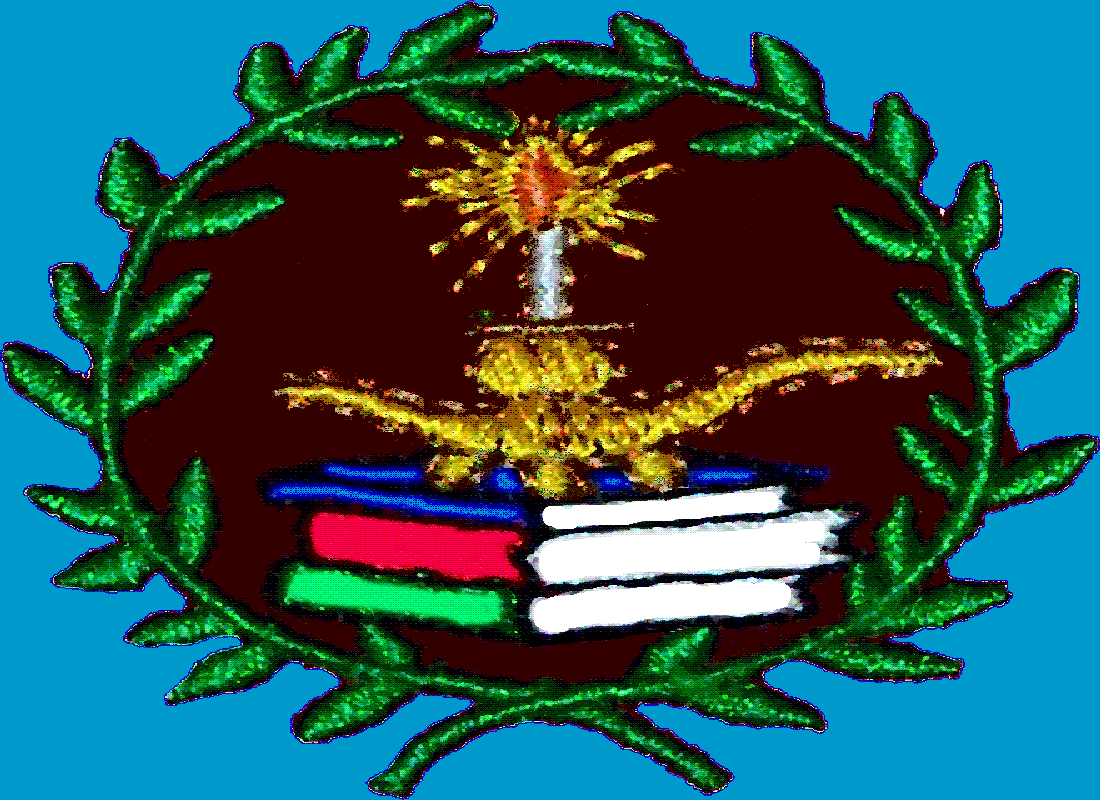 |
| |
|---|---|---|
Historians |
| |
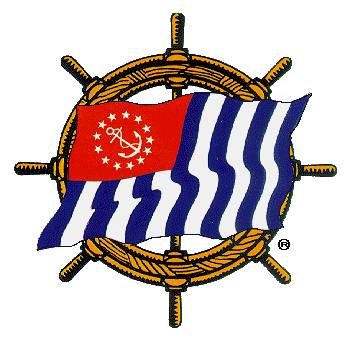
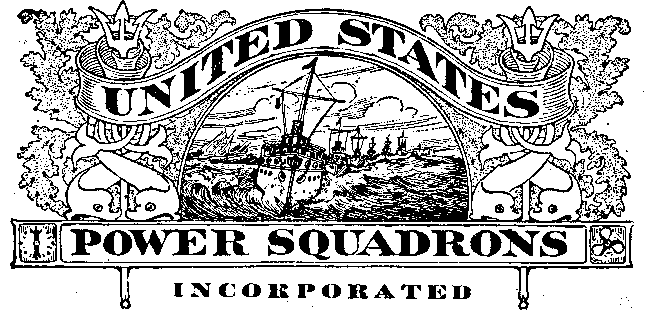
History has been defined as the ideas, acts, and events, which shape the future. USPS has been shaped by its history and to understand our present more fully, we must first look back into our past. Seldom does the complete story of an organization's founding survive the passage of time. So we grope today for much of the story of our beginnings. The gaps in what remains to us in the minutes, manuals and magazines of the early era have had to be filled in with assumptions and the memories of early recruits.
This much is certain: in the list of founding fathers the name of Roger Upton of Boston and Marblehead, Massachusetts stands pre-eminent. The "power squadron" idea was the projection of his thoughts. The power squadron spirit was the reflection of his enthusiasm and early growth was the fruition of his labors.
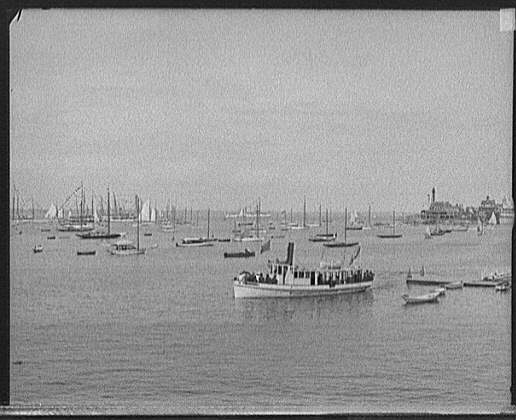
To begin our story we must go back in time to the world of boating at the turn of the century. Recreational yachting in the early 1900s was largely confined to sailing craft and large steam yachts manned by professional crews. The commercial ships of the day were all steam-driven. Steam had become king by the dawn of the twentieth century and commercial sailing schooners were fast becoming relics of a bygone era. Gasoline-driven craft were coming into their own by 1909 but with little enthusiasm on the part of out-and-out sailors. Yacht clubs taught and promoted the sport of sailing and as motor yachts joined the fleet there were few activities for them. Yachting was still for sailors and the new breed of powerboat men found scant fun on club cruises and almost none in racing.
(Boston Yacht Club, Marblehead, Mass.)
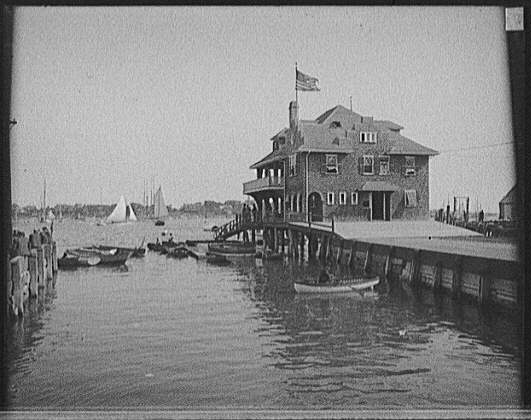
Roger Upton was a sailing member of the Boston Yacht Club in 1909 but, unlike so many other sailors, the newfangled powerboats captivated him. He owned a 50-foot ketch named Nirvana and often cruised up the coast to Maine. Because he was a businessman, and because wind power was so often unreliable, he bought a 35-foot motor launch with a gasoline engine to serve as tender for the ketch and to tow her when she was becalmed. The following year he installed a 20-horsepower convertible kerosene-gasoline engine in the ketch, making it possible for him to return to his business on time. The reliability of power appealed to him and he grew to love power boating.
How long the idea incubated in Upton's mind we'll never know but in the summer of 1911 he spread his thoughts before a small group of his colleagues at the Boston Yacht Club. Upton's idea was for a club-within-a-club, to embrace a select group of "gasoliners" who would develop such forms of cruising and racing as the new type of yachts allowed. To quote from one of his articles, "To my mind the organization can be of use to yachtsmen for three major reasons: first, improvement in navigating ability of power-boat owners; second, promotion of acquaintance and social intercourse by the power-boat owners; third, the fitting of power-boat owners to be of possible use to the Navy in time of war so that they might be received as volunteers should they so desire."
Upton was elected Rear Commodore of the Boston Yacht Club in 1912 and with the acceptance of his ideas was placed in charge of the unofficial Power Boat Division of the fleet. A self-taught navigator and stickler for doing things right, he soon kept the division's 36 members busy with studies, cruises, races and drills modeled after U.S. Naval maneuvers.
The social side of the organization included monthly dinners at which ship and tow captains, marine inspectors and others were guest speakers. Out of these activities grew confidence in and a change of attitude toward the new breed of yachtsman.
There was a need for education at the time. The laws of the United States governing navigation applied only to steam vessels, and they were governed by a board of steamboat inspectors who were old, crusty, sea-going men. These inspectors had no use whatsoever for the small internal-combustion yachts, and it was their fondest hope to gain control of these boats and have them supervised by the same stringent rules, which governed ocean liners, and other steam- powered vessels. Upton and other USPS founders set out to protect power yachts from these steamboat inspectors and to remove forever the stigma of ignorance and foolhardiness, which they and professional sea captains and sailors had bestowed on their owners.
During the summer of 1912, twenty Power Boat Division vessels were invited to go with forty windjammers on the annual Boston Yacht Club cruise to Portland, Maine. The powerboats cruised in squadron formation with an elaborate system of maneuvers executed by means of flag signals. During the cruise a screeching nor'wester blew up. Many of the sailing yachts were dismasted or otherwise disabled. The power yachts under Upton's command went to their rescue, towing disabled craft to port. No losses were reported. To quote the September 1912 issue of Motor Boating Magazine, which dramatized the rescue with a six-page photo story, "The fellows of the Powerboat Division provided meritorious service and emerged from the ordeal crowned with glory."
On 14 October 1912, a letter from Rear Commodore Roger Upton was read by the Executive Committee of the Boston Yacht Club, petitioning the club to officially establish his Power Boat Division. As the minutes of that meeting disclose, the Executive Committee granted Mr. Upton's petition unanimously. At the annual meeting in January 1913, the name was changed to "Power Squadron" and the club-within-a- club was officially recognized. Its officers and rules were printed in the 1913 Boston Yacht Club Yearbook. Officers were Roger Upton, commander; C. N. Burnell, lieutenant commander; and Nathaniel L. Stebbins, a noted Boston marine photographer, secretary.
A distinguishing Power Squadron pennant was designed to be flown above the Yacht Club burgee. It featured a red field with centered white star at the hoist; the center third was white and the outer end, blue. Only when a prospective member was able to pass what now seems to have been a fairly stiff examination in advanced piloting subjects was he authorized to fly the streamer. Though powered vessels were referred to as "stinkboats" by sailing members, their owners and operators were held in great esteem for the knowledge they had acquired of seamanship and navigation.
So ends the birth of the idea and its development into an active movement. But it was only the beginning. Assisted by a three-page story in Yachting Magazine, news of the Boston outfit's activity spread and other clubs began to plan along the same lines. Yacht clubs around the metropolitan New York area and elsewhere started talking squadron ideas and selecting men for membership.
In June 1913, additional interest was generated when Charles F. Chapman, associate editor of Motor Boating Magazine, gave the idea a full-page spread. The Boston Yacht Club called 30 delegates representing 70 clubs and associations of powerboat owners to assemble at the New York Yacht Club for a conference to consider the formation of power squadrons. Commander Roger Upton explained in detail the reasons, which led to his forming the Boston Yacht Club Power Squadron, and told of what was being accomplished in instructing power yachtsmen in the rules of the road and handling of their boats.
FDR
Franklin Delano Roosevelt, then assistant secretary of the Navy and an honorary member of the Boston Yacht Club, had observed Power Squadron drills as a guest aboard Upton's yacht, Elizabeth. He had been greatly impressed with the activities of the Power Squadron and had sent his aide, Captain William F. Fullam, to attend the meeting. As was reported in the press, Captain Fullam praised the organization in the highest terms possible and complimented the officers for the training they were providing with their naval-type drills. As a footnote, it should be added that two years later Mr. Roosevelt was instrumental in transforming the Revenue Cutter Service and the Lifesaving Service into the United States Coast Guard, which, during World War I, provided coastal patrols as part of the Navy.
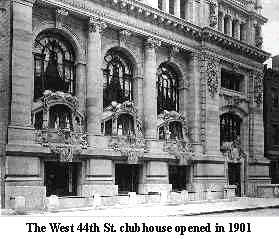
The yachting community took great interest in that November 1913 conference at the New York Yacht Club. The cause and the men who supported it were applauded editorially by leading newspapers in the Northeast. The Boston Globe of Sunday, 16 November 1913, said, "The delegates at the conference were men of weight in the yachting world. There was great interest manifested and, in all probability, the [organization] will have the name `United States Power Squadrons'.
More interest followed. A meeting of the newly organized Power Squadron Conference Committee was held at the New York Yacht Club on 5 December 1913 and an outline of what was suggested at the meeting was forwarded to all who were interested. A second Conference Committee meeting was called for Monday, 2 February 1914, at the New York Yacht Club, and during the evening the final work of organizing and launching the United States Power Squadrons was accomplished. The meeting, which took place in the Commodore's Room, was called to order by Henry A. Morse of the Eastern Yacht Club and included representatives of squadrons and yacht clubs from Maine to Maryland. As one can read in the minutes, the organization was made complete by the election of the following officers: Chief commander, Roger Upton, Boston; vice commander, Holman F. Day, Portland; rear commander, Worthington Scott, New York City; treasurer, Charles F. Chapman, New York City; and secretary, Bryan L. Perman, Boston.
All were elected to the Governing Board, as were Henry A. Morse, Charles Longstreth, Frank Cornwell, Francis Wilson, and Rear Admiral DeWitt Coffman. In the tradition established by our nation's oldest yacht clubs, Rear Admiral Coffman, Commandant of the Boston Navy Yard and an honorary member of the Boston Yacht Club, served on the USPS Governing Board for many years. On at least one occasion a Governing Board meeting was held aboard his flagship, Virginia. Arthur J. Tyrer, Deputy Commissioner of Navigation of the Department of Commerce, was also an active member of the early Governing Board, and excellent though unofficial relations were maintained between the squadrons and the Department of Commerce.
April 1914 was a productive month for USPS. Roger Upton was granted a patent for the present USPS ensign, which soon replaced the pennant flown until that time by Power Squadron members. At a meeting held at the Harvard Club of Boston, bylaws were approved by the Governing Board. For purposes of instruction, the Atlantic seaboard was divided into six USPS districts and Boards of Instruction and Examination were appointed. Then, in addition to knowing the rules of the road, compass, buoys and flag signals, a member was required to attend at least three squadron drills yearly to retain his certificate. When he had attended twelve, he became a "privileged member" and thereafter needed to appear at only one each year to hold his certificate.
(Hotel Manhattan, New York.)
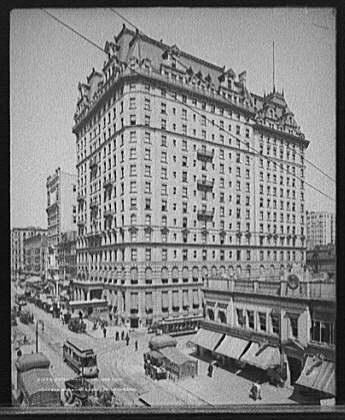
The motorboat was gaining in popularity, and squadrons grew both in number and in size. USPS was incorporated on 19 February 1915. A year later, at the annual meeting held at New York's Hotel Manhattan, a large volume of business was carried on by delegates representing 470 members in 15 Squadrons.
As the squadrons grew, the internal educational program developed to keep pace. By January 1917, a Junior Navigator course was worked out and published in installments in the organization's periodical, the ensign. A Navigator course was also established, including a review of all that the candidate had ever been taught.
USPS had 477 members in twenty squadrons in January 1917. As World War I threatened to engage our nation, all Americans became very active in the preparedness movement. The United States declared war on Germany on 6 April l917; and with the coming of hostilities, Chapman sent a letter to Franklin Delano Roosevelt, Assistant Secretary of the Navy, volunteering the entire USPS instructional program for the training of men for naval coastal defense. Secretary Roosevelt accepted the proposal with gratitude. In New York City, four free nautical schools were established. Based on the records, the total enrollment exceeded 3,000 students. Similar schools were organized by local squadrons in Boston; Detroit; Newburgh, New York; New Haven and Washington, D.C. Over 5,000 men who attended these classes entered the armed services and, based in significant part on the quality of their USPS training, many were appointed officers. Squadron members themselves enlisted in the Navy and many, because of their out standing nautical education and background, soon earned commissions.
On 26 January 1918, chief commander Coe wrote the following in his annual report: "The demands of war have affected all social, fraternal, and economic life, and our organization has not escaped the problems and handicaps which have arisen from this abnormal condition." USPS had developed problems. With the coming of peace, interest waned in all things military, and squadron activities and membership declined dramatically.
Times remained difficult under chief commander Burnell. At the fall meeting of the Governing Board in 1919, his successor, H. M. Williams, reported that USPS had no money in the treasury and was $450 in debt. Williams recommended that members of the Governing Board chip in, pay the bill, and disband the organization. Vice commander Adolphus B. Bennett disagreed. He opposed dissolution and, instead, proposed four changes in the bylaws, which he predicted would revitalize the organization and redirect it on a promising new course. Here were his proposals: (1) That a member of USPS should a member of a local squadron; (2) that all boat drills and maneuvers be eliminated; (3) that invitation to membership should no longer be restricted to yacht club members but be based on a man's proficiency in boating and compatibility with other USPS members; and (4) that USPS should encourage all its members to take advantage of the educational opportunities developed within the organization. At the annual meeting in 1920 Bennett became chief commander and revised bylaws, including his and past chief commander Coe's suggestions, were adopted. It was a difficult task. A thousand letters were written to those on the ensign mailing list, telling them of the changes in the bylaws and asking them to pay $1 dues for 1920 and come back. One hundred forty-two signed on, a few from each squadron, and USPS began a new lease on life.
Four years of hard work ended in success for Bennett, who was the only chief commander to serve more than two terms. In 1924 there were 388 members, over $1,000 in the treasury, and no debt. New certificates were issued to those rejoining, with number 1 going to Chapman, who was now the senior member of USPS.
USPS grew slowly during those formative years and by April 1931 the organization reported a total membership of only 840 in twelve squadrons. If the quantity of members was disappointing in the early thirties, the quality of instruction taught by members was not. With the introduction of Advanced Piloting in 1932, our Advanced Grades program was established.
In October 1933, the Committee on Rules presented a plan for changing our bylaws into a constitution and writing a new set of bylaws containing details for the running of a squadron. The following year, these were approved by the membership. By October 1932, USPS had 1,431 members in 15 Squadrons. Our organization had an outstanding Advanced Grades program and a new constitution. Our future looked brighter than ever.
The Governing Board, on 13 December 1938, approved the establishment of seven divisions consisting of 33 squadrons and the appointment of a rear commander to administer each division. Later, the division designation was changed to "district". USPS had upwards of 5,000 members by the end of 1938.
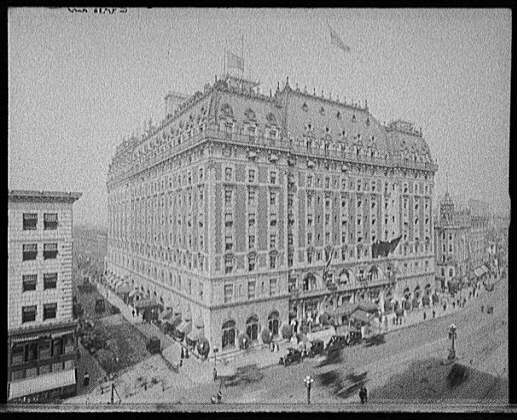 On
14 January 1939, the organization celebrated its 25th anniversary. Twenty-one
squadrons were represented at a dinner-dance held at New York's Hotel Astor.
The party was one of the largest and most successful affairs ever held
by USPS. In honor of the occasion, President Roosevelt sent a letter of
congratulations, greatly praising our civic service. Later that same year,
the President accepted honorary membership in USPS, bestowed upon him by
vote of the Governing Board.
On
14 January 1939, the organization celebrated its 25th anniversary. Twenty-one
squadrons were represented at a dinner-dance held at New York's Hotel Astor.
The party was one of the largest and most successful affairs ever held
by USPS. In honor of the occasion, President Roosevelt sent a letter of
congratulations, greatly praising our civic service. Later that same year,
the President accepted honorary membership in USPS, bestowed upon him by
vote of the Governing Board.
1939 was a milestone in USPS history. It was also a year of tragedy, for, once again, the world had erupted into war. On 8 December 1941, less than 24 hours after the attack on Pearl Harbor, vice commander William Sayers sent a telegram to President Roosevelt and the Secretary of the Navy offering USPS support for America's war effort. For the second time in 24 years, President Roosevelt accepted this support with appreciation.
During World War II over 3,000 USPS members enlisted in the armed forces, including chief commander William Anderson, who was sworn in as a lieutenant commander in the U.S. Naval Reserve. Once again, USPS night courses mushroomed, and our instructors taught navigation and allied subjects in squadron classes. Thousands of members served with the Red Cross, Merchant Marine and other war-related services, contributing significant assistance to our nation.
With the encouragement of USPS, more than 25 squadrons actively assisted the Coast Guard Auxiliary during this period. Friendly cooperation between the two organizations has been traditional ever since.
USPS grew rapidly during World War II. By 1945 it had become apparent that a paid staff and office space were needed for the national secretary to meet his increased responsibilities. A resolution was adopted authorizing Secretary Charles Leach to employ such clerical help as was necessary, and a three-room ground floor apartment in Englewood, New Jersey, was rented for the storage of USPS supplies and records.
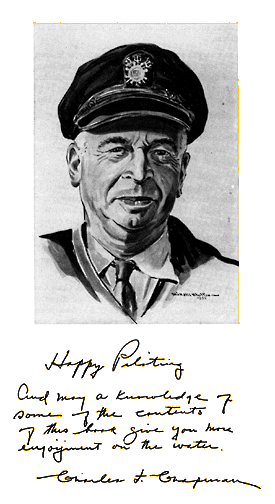
In 1946, Chapman, who had served USPS in every other capacity, was elected chief commander. Shortly thereafter an office manager was hired for USPS. With a staff of three women, the clerical and storage needs of a growing membership and educational programs were soon being served adequately.
Seamanship had been added to the Advanced Grades program in 1942, followed by an Elective Course program beginning with the Engine Maintenance and Weather courses in 1946. Instruction Techniques was also launched during this period. USPS more than doubled its size during the forties and as we entered the fifties, the demands placed upon headquarters became even greater.
In 1947, "rear commander in charge of district" was changed to "district commander". The first elected district commanders were approved for 16 districts and for unattached squadrons and personnel.
A Sail course was added in 1953. Headquarters staff, which had increased to six, moved into a combination office and warehouse in the same community. Within five years these facilities, too, proved inadequate, so in August 1958 USPS moved into even larger quarters in Englewood. Our organization grew significantly during the fifties, and in May 1959, the national secretary reported 45,000 members in 268 Squadrons.
Recreational boating was booming as USPS entered the sixties. A Marine Electronics course was published in 1961 and by 1966, when Commander Chapman was awarded his 50th merit mark, our organization had recorded a membership of over 60,000 in 348 Squadrons.
By 1974, our 60th anniversary, USPS had succeeded beyond our founders' fondest dreams. Membership exceeded 70,000 in 425 squadrons and a new headquarters building had been constructed in Montvale, New Jersey. In September 1975, the USPS Governing Board voted to move national headquarters to Raleigh, North Carolina. The relocation was completed and operations well under-way as our nation embarked on its bicentennial year.
In 1978, construction was begun on a modern office and warehouse facility in Raleigh. This new headquarters building was occupied by the end of the year. An additional two-story wing was added during 1990-1991, including a new memorial library and up-to-date computerized procedures which enabled the staff to handle extensive printing needs, control educational inventory, and respond to virtually every kind of membership request.
Because of litigation in New York and New Jersey in the latter half of the 1970s and early 1980s over the issue of private status vs. public accommodation, coupled with a sagging national economy registering high rates of inflation and unemployment, membership dipped to the low 50,000s, in 454 squadrons and 33 districts. Governing Board actions at the September 1981 and September 1982 meetings recognized two important aspects of USPS participation. In 1981, members whose long service had earned them 50 merit marks were granted the status of Governing Board member emeritus, with lifetime voting privileges. In 1982, a special meeting of delegates approved changes in the constitution and bylaws eliminating a male-only membership rule, thereby permitting women to become active members.
Although many women had long held a "woman's certificate", entitling them to enroll in all USPS courses, it was apparent that boating had become a family-oriented endeavor. Accordingly, the bylaws were changed to make family memberships available. The first female active and family members were accepted in November 1982. Because families then could have more than one active member sharing the same residence, a reduced dues structure was established whereby only one copy of THE ENSIGN would be mailed to a shared address. As to THE ENSIGN itself, the editorial and publications activity were transferred in December 1982 from San Mateo, California, to USPS Headquarters in Raleigh.
From the standpoint of teaching, the Educational Department constantly seeks improved course materials and better participation by members. As part of that effort, a new Piloting course was introduced. An elective course, Cruise Planning, is the newest addition to the list. To round out the educational schedule, a varied curriculum of supplemental courses is available, and a family-based Skipper Saver program may be presented by a USPS member to any interested group.
Squadrons engage in two of the best-known forms of public service by their teaching of the Boating course to the general public and the updating of nautical charts and geodetic marks. The former program is of value to thousands of boaters every year, and NOAA estimated that squadrons in the cooperative charting program saved the taxpayers as much as fifteen million dollars in 1990 alone.
In order to assist those boating enthusiasts who prefer TV instruction to classroom attendance and for anyone else who desires a modern approach to the subject USPS and the William Morrow Company produced the USPS Boating course on video.
A further indication of the latest techniques to improve membership knowledge is the Operations Training program and its offshoot, Leadership Development. When today's better-informed members set out to insure their boats, USPS now boasts its own marine insurance program with both low rates and sound coverage.
In April 1983, in honor if its 70th anniversary, USPS presented a plaque to the Boston Yacht Club commemorating its origin in 1913. In October of that year a plaque also was presented to the New York Yacht Club as a reminder of the place where the original charter had been formalized in 1914.
To celebrate USPS' 75th anniversary, five large USPS ensigns traversed all of the United States and Canada. These ensigns visited every USPS squadron and many units of CPS. Two special ensigns logged 1.6 million miles in their journey over all seven seas on board the NASA shuttle Atlantis between 4 and 8 May 1989. Still another went to Moscow. All ceremonial ensigns converged on the Governing Board meeting in Richmond, Virginia, on 16 September of that year. Part of the celebration included a visit by Chief Commander William D. Selden, N, to the White House, where he looked on as President George Bush signed a proclamation honoring USPS.
George Bush
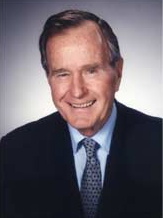
As the squadrons entered the 1990s, their long-standing
relationship with Coast Guard Auxiliary flotillas was further strengthened
by acceptance of each other's educational courses as meeting educational
requirements for membership.
Started as a club-within-a-club in the early 1900s, USPS today is a private, self-supporting, non-profit, fraternal boating organization with an incomparable record of achievement. No other enterprise can boast of more dedicated or more productive members people who have given generously of their time and resources to educate each other in all aspects of boating, and to promoting the cause of safe boating through public courses and other civic services.
A roster of seven squadrons in 1914 has now grown to well over 450 units operating in the continental United States, Hawaii, Puerto Rico, and Japan. A parallel organization, Canadian Power and Sail Squadrons, with which we maintain close cooperation, flourishes in Canada.
Recreational boating has traveled a long course since 1912, and USPS has come an equally long way. The ideas and accomplishments of our predecessors have prepared us well for the challenges and opportunities, which lie ahead.

|
|
|
|
